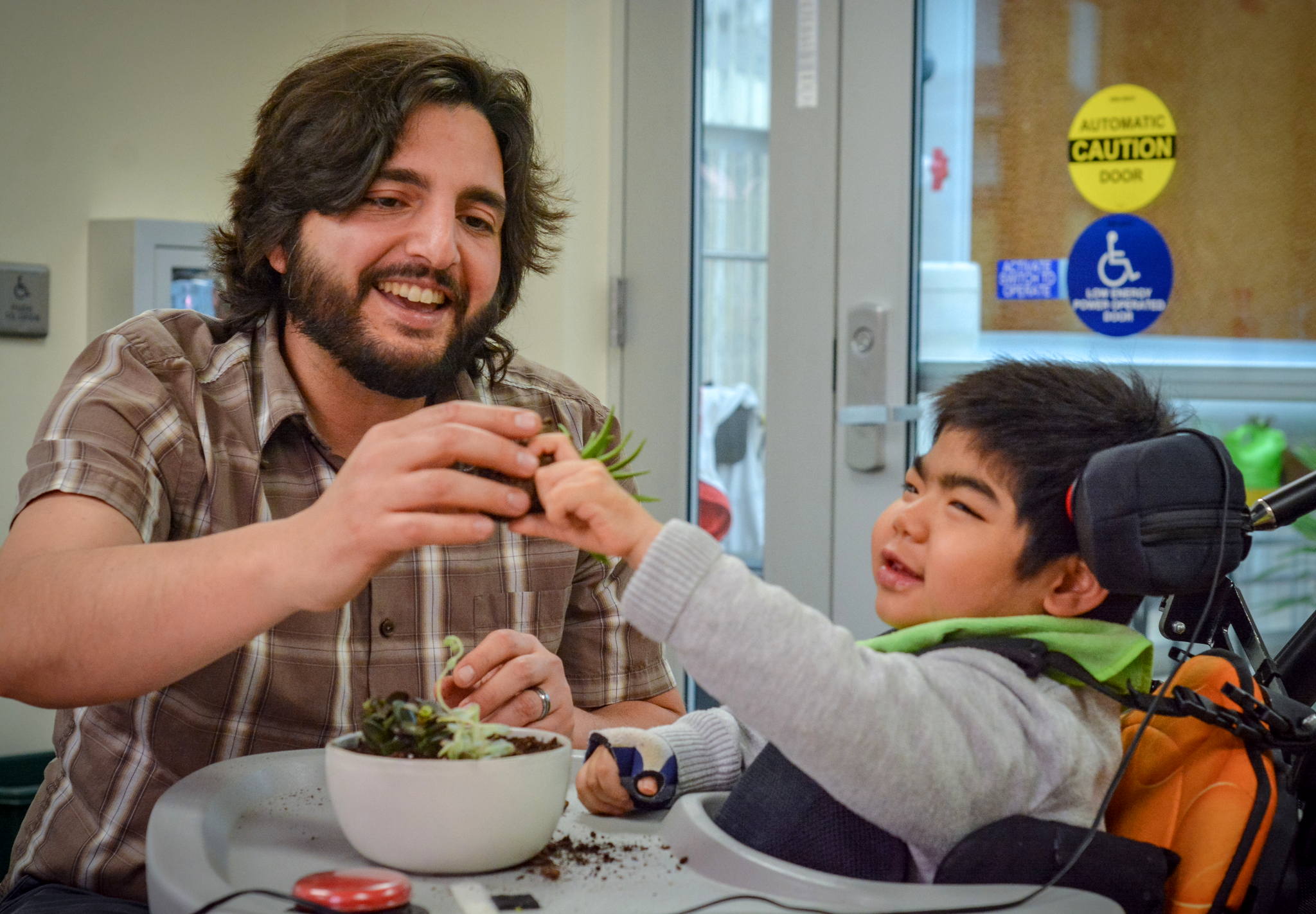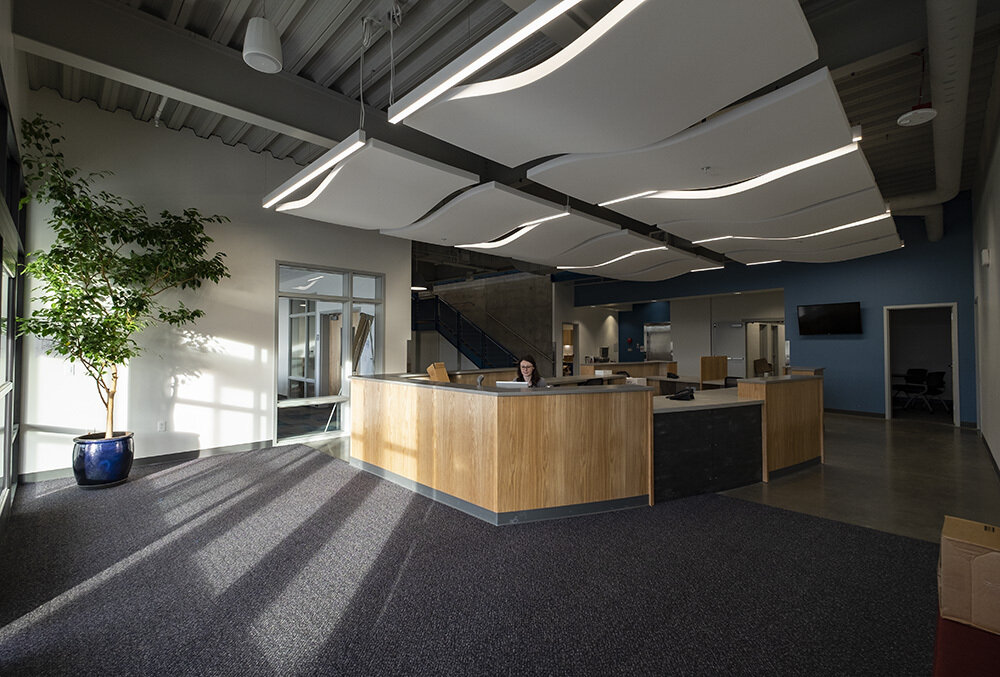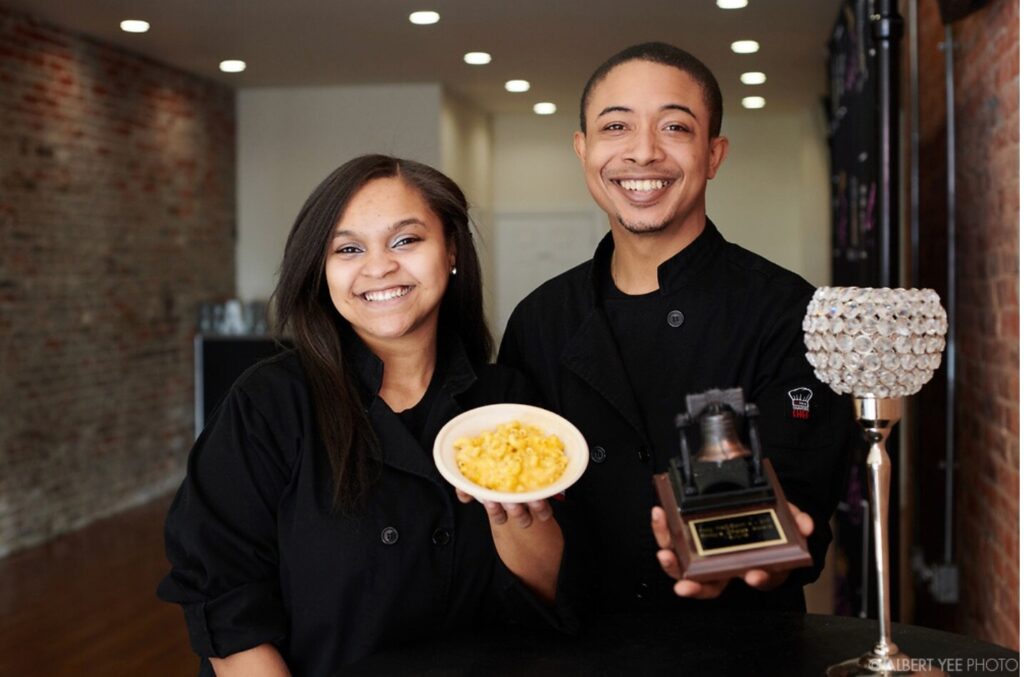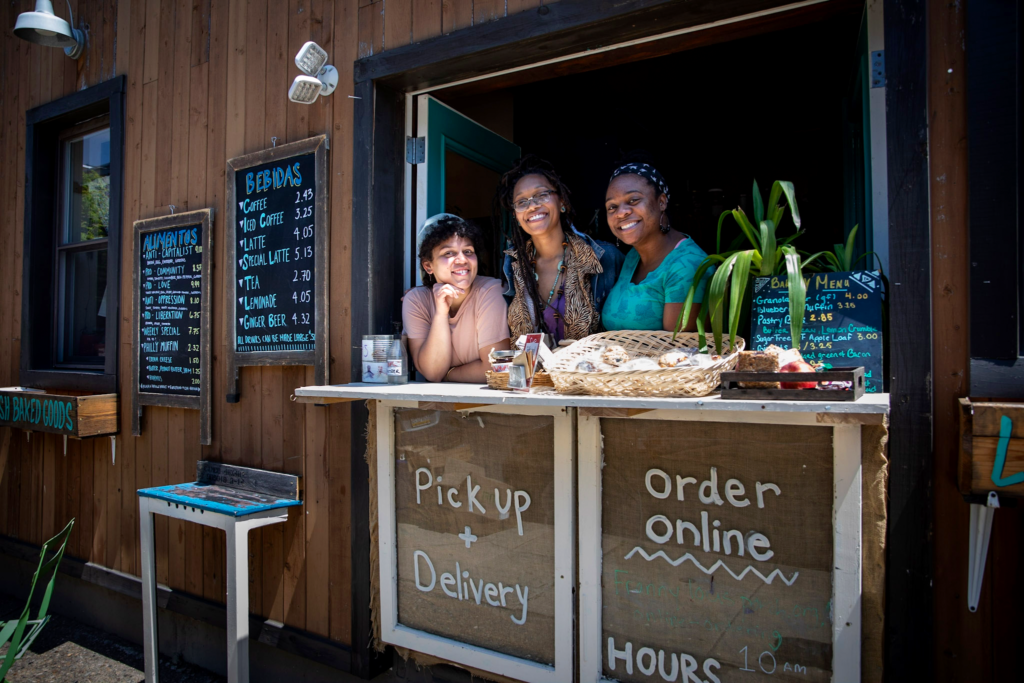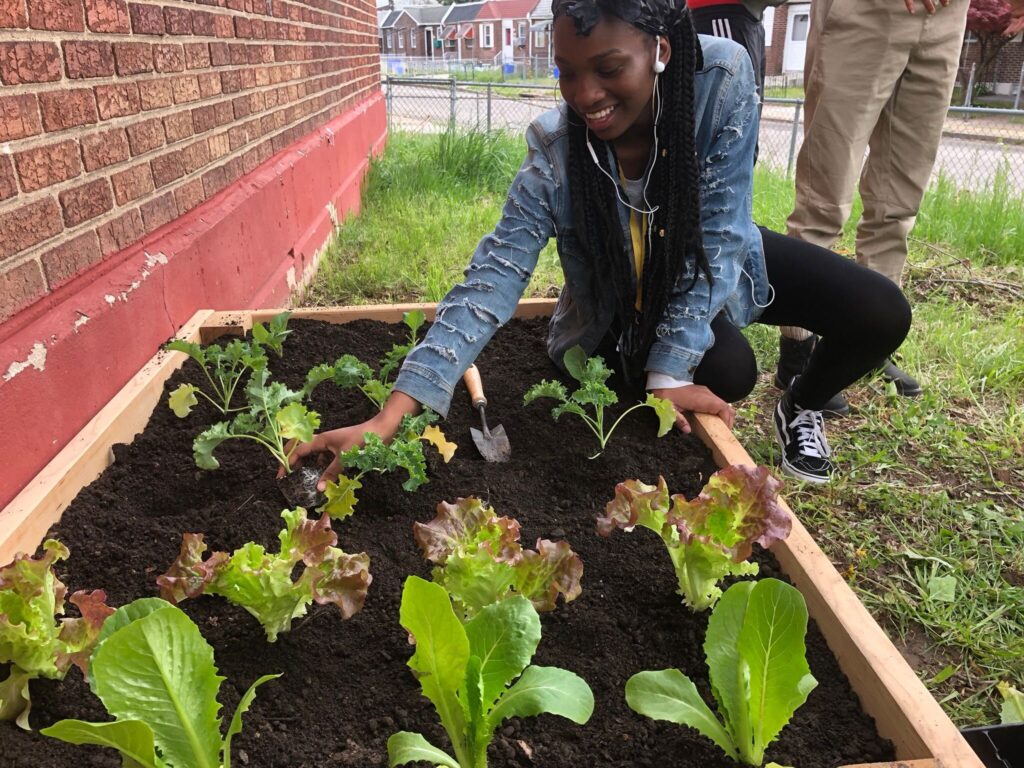Photo courtesy of Overbrook School for the Blind
Learning From Nature
By Constance Garcia-Barrio
At the overbrook school for the Blind (OSB), situated on what was once Lenni Lenape land, staff members seem to have embraced the Native American belief that the Earth is a wise teacher. The school’s new million-dollar M. Christine Murphy Horticulture Education Center allows OSB to blend technology and horticultural therapy using that ancient material, dirt, to help students learn, heal and enlarge their lives.
“Horticultural therapy uses plant-based activities to reach the same goals students would achieve through physical and occupational therapy,” says horticultural therapist Rich Matteo, 37, of Langhorne. “In addition, children get a biology lesson from planting a seed and observing how it grows into, say, a tomato plant.”
Opened last year, the 1,780-square-foot greenhouse soon became popular. “I like the greenhouse because it’s warm and it smells good in there from the flowers,” says Dante M., 19, who’s blind. “It’s interesting, and Mr. Rich does fun activities with us.”
The horticultural education center may hark back to the school’s roots in innovation. Founded in 1832 as the Pennsylvania School for the Instruction of the Blind by German immigrant Julius Reinhold Friedlander (1803-1839), it was one of the first such schools in the country. Located at 20th and Race streets in the beginning, the school moved to Overbrook in 1946. Today, this private, nonprofit school sits on 26 acres in West Philadelphia.
The horticultural center, built thanks to a donation from the family of M. Christine Murphy, an OSB trustee who died in 2011, and a $200,000 grant from the Green Mountain Energy Sun Club, includes the greenhouse, a classroom, a utility area where the produce is weighed and processed and the office of OSB’s Farm to Table Program.
Diligent planning ensured that the center would meet students’ needs. OSB superintendent Jackie Brennan, as well as an experienced horticultural therapist and other staff members visited horticultural programs at the Magee Rehabilitation Hospital, Delaware Valley University and other institutions to develop the optimal design. “OSB has more than 200 students, ages 5 to 21, 25 percent of them blind, 75 percent with low vision and some with other challenges too,” says Brennan, 60, of East Goshen. “We kept in mind visual and tactile accommodations and wheelchair accessibility.”
For example, table tops can move to let students in wheelchairs come close. The team also sought to conserve water.
“We have a rainwater harvesting system,” Matteo says. “That technology, combined with low-flow plumbing fixtures, means we use 82 percent less water than a conventional greenhouse of similar size. We use gray water to flush toilets and water plants.”
Solar panels on a nearby field house help to supply energy for the center, says Matteo, adding that the roof of the greenhouse is lightly colored so that it traps less heat.
A friend working in horticultural therapy urged Matteo to consider the field.
“I’d been teaching history in middle school for several years, but I love gardening,” he says. “It took time because I was working full time, but I earned my certification in horticultural therapy from Delaware Valley University.”
Now he feels more deeply engaged in education.
“Is it really important in life to know about the Gold Rush of 1849, the kind of fact that I used to teach?” he asks. “Here, I’m teaching bedrock skills like how to grow food, eat well and care for the Earth. Not to say that challenges don’t come up. Some students have an extremely sharp tactile sense, and it can take weeks for them to get used to touching dirt. But you introduce them to gardening in this safe setting, and, pretty soon, most of them look forward to getting their hands in the soil.”
The plants provide another way to learn. “We have lamb’s ear, which has a fuzzy leaf, and jade, which is smooth and glossy,” Matteo says. “Students light up when they make that distinction.”
Herbs give students a feast of fragrances and help them pinpoint other differences.
“This lemon geranium has a grassy-citrus scent,” Matteo says, of the plant with a narrow leaf, “and this citronella is lemony but floral, with leaves shaped something like parsley.”
“I encourage students to smell and touch plants. Besides making distinctions, they’re also reaching, a movement that many of them benefit from practicing.”
Matteo seems to have a repertoire of activities to address students’ vulnerabilities and familiarize them with growing food. “I’ve watched a little girl go from a wheelchair to a walker to walking on her own,” he says. “When she’s ready, I’ll give her a task like putting seeds in a seed bed. She’ll learn about plants, use fine-motor skills, and, by standing up, strengthen her legs.”
Once the seedlings have grown, Matteo and the students head outside. “We transplant seedlings from the greenhouse to raised beds located all over campus,” he says. “Students water, weed and harvest produce, as time allows. Many of them love being outdoors and having a job they’re responsible for. It gives them ownership, a stake in what’s being done.”
Odds and ends and donated gadgets sometimes help Matteo meet students’ needs. “Joann McNamee, OSB’s director of therapy, gave me a Waterpik for cleaning your teeth. I had no idea what to do with it. Then I had a student who found a watering can unwieldy. He used the pik instead to water plants.”
Matteo gives cardboard boxes new life, too. Taken apart, they provide rectangular surfaces where students paint pictures. It doesn’t stop there. “I also re-use old telephone directories to dry and press flowers. Students sell items like bookmarks and stationery made with dried wildflowers at the Christmas sale. Proceeds go back into the program. It helps us be self-sustaining,” says Matteo.
Children take special delight in one aspect of harvesting petals. “Kids love ripping the petals from the roses to make potpourris,” Matteo says. “It helps with both fine and gross motor skills. For the students who have vision, it helps with hand-eye coordination.”
Activities in the greenhouse dovetail with those of the Farm to Table Program, begun in 2009. OSB’s orchard, on the western edge of campus—said to be third largest in Philadelphia—has some 60 trees that produce figs, plums, peaches and persimmons. Asparagus, peppers, eggplants, lettuce and spinach grow in raised beds throughout the grounds. Lots of the greens wind up in the dining room’s salad bar, but many land on the produce cart students push around campus each week to sell to the OSB staff.
“Loading the cart teaches skills, from counting—‘Let’s put 10 tomatoes in this bag’—to arranging items to make good use of the space,” Matteo says. S
elling produce from the cart teaches students to engage with others and handle money, skills they can use later on in life.
“Last year, we raised more than 1,000 pounds of produce,” Matteo says. Sharing that bounty strengthens OSB’s ties with the community. “We donated fruit to a food pantry in Upper Darby and to a restaurant in Media,” he says, noting a give-and-take in community contact. “The Philadelphia Orchard Project advises us about tending our trees.”
OSB lost some newly planted greenery right after the COVID-19 shutdown, but now Matteo stops by to take care of the orchards, gardens and greenhouse, a building which just achieved Zero Energy Certification. He’s helped in that respect from the OSB maintenance crew, considered essential staff. In addition, students continue to hone their gardening skills in their backyards.
Meanwhile, Matteo envisions more possibilities. “I’d like to turn the area around the greenhouse into a butterfly garden with nectar-producing plants,” he says, “and I’d like to start composting. It would bring their knowledge of the Earth full circle.”

